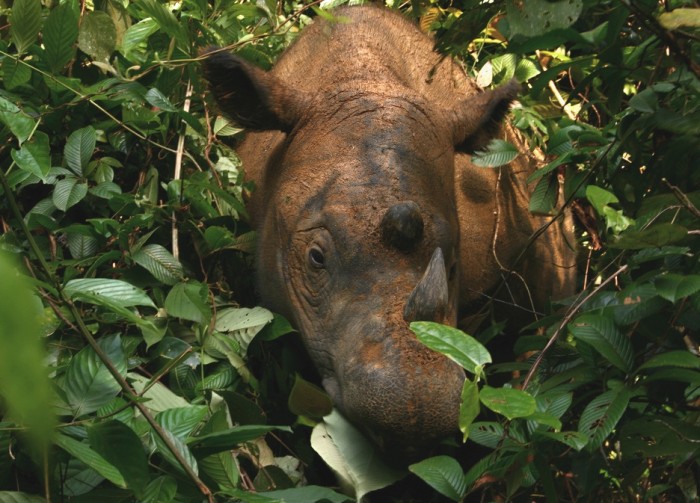Sumatran Rhino Extinct in Malaysia
It is vital for the survival of the species that all remaining Sumatran rhinos are viewed as a metapopulation, meaning that all are managed in a single program across national and international borders in order to maximize overall birth rate.
 Image: By Willem v Strien (flickr: IMG_2227) [CC BY 2.0 (http://creativecommons.org/licenses/by/2.0)], via Wikimedia Commons
Image: By Willem v Strien (flickr: IMG_2227) [CC BY 2.0 (http://creativecommons.org/licenses/by/2.0)], via Wikimedia Commons Leading scientists and experts in the field of rhino conservation have declared the critically endangered Sumatran rhinoceros extinct in the wild in Malaysia. Historically ranging across most of South-East Asia, the Sumatran rhino now only lives in the wild in Indonesia, with a precarious population of less than 100 individuals.
Despite intensive survey efforts, no signs of wild Sumatran rhinos have been found in Malaysia since 2007, apart from two females that were captured for breeding purposes in 2011 and 2014. The study, published in Oryx, was led by the Centre for Macroecology, Evolution and Climate at the University of Copenhagen, in partnership with WWF, IUCN and the International Rhino Foundation.
The individuals left in Indonesia are estimated to live in three separate populations, one of which has seen a critical decline in distribution range of 70% over the last decade. These populations are too far apart. “It is vital for the survival of the species that all remaining Sumatran rhinos are viewed as a metapopulation, meaning that all are managed in a single program across national and international borders in order to maximize overall birth rate. This includes the individuals currently held in captivity,” says lead author and PhD student Rasmus Gren Havmøller.
Nine Sumatran rhinos are currently in captivity. Five are in the Sumatran Rhino Sanctuary, one is in Cincinnati Zoo, soon to be moving to Indonesia, and three are in Malaysia awaiting attempts to produce embryos by in vitro fertilisation. Captive breeding was identified as a key conservation action in April 2013 at the Sumatran Rhino Crisis Summit and agreed upon by the Indonesian government. However, the technology to allow this to happen may still take years to develop, by which time we may lose the Sumatran rhino in the wild completely.
Another key conservation action was the creation of intensive management zones – areas with increased protection against poaching where relocated rhinos can be released to increase the number of potential mating partners. The continued development of Rhino Protection Units at the sites with remaining breeding populations was also identified as a solution to the crisis. This has been achieved but the authors of the study highlight the need for strengthening the units against poaching, especially in light of the high demand for rhino horns on the black market in Asia.
The conservation strategy, however, requires political will. “The tiger in India was saved from extinction due to the direct intervention of Mrs. Gandhi, the then prime minister, who set up Project Tiger. A similar high level intervention by President Joko Widodo of Indonesia could help pull the Sumatran rhinos back from the brink,” says Christy Williams, co-author and coordinator of the WWF Asian and Rhino and Elephant Action Strategy. Widodo Ramono, co-author and Director of the Rhino Foundation of Indonesia (YABI) elaborates: “Serious effort by the government of Indonesia should be put to strengthen rhino protection by creating intensive protection zones, intensive survey of the current known habitats, habitat management, captive breeding, and mobilizing national resources and support from related local governments and other stakeholders.”





No comments yet.